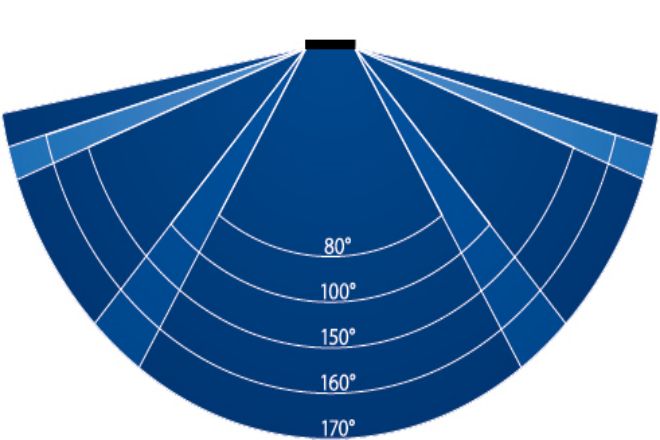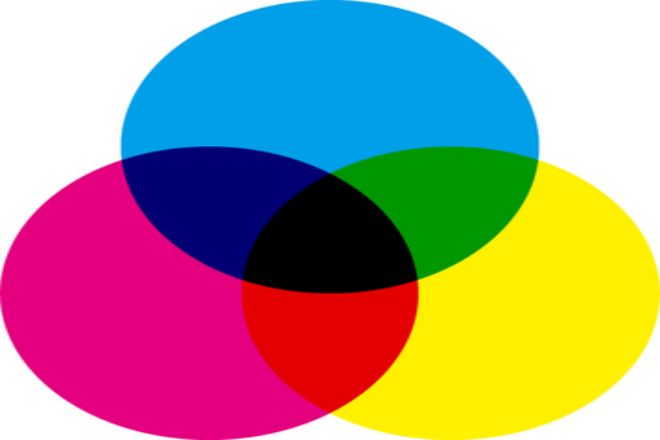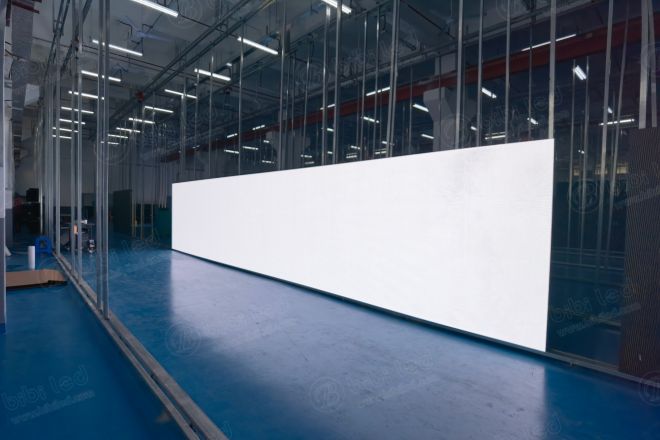Introduction

Today’s LED displays have developed into an inseparable part of our lives. Its “shadow” can be seen from TVs to billboards, from monitoring screens to electronic games. As it becomes more and more widely used and more and more people buy it, many people are beginning to worry about its quality, such as: How many years can it be used? How do we ensure product quality?
Then, this article will help you understand how to distinguish the quality of LED display screens. If you are buying an LED display screen for the first time, you should read it carefully!
Method 1: Response time
The response time of the LED display screen refers to the time from the display screen receiving the signal to displaying the corresponding picture. The shorter the response time, the smoother the picture.
A high-quality LED display has a short response time and a smooth picture; a low-quality LED display has a long response time, which may cause screen smearing or freezing.
By observing the performance of the display screen when playing dynamic pictures, such as whether the picture is smooth and smearing, we can initially judge the quality of the LED display screen.
Method 2: Brightness and viewing angle

The brightness and viewing angle of an LED display are also important indicators to evaluate its quality.
Brightness is the brightness displayed by the LED display. The brightness requirements of indoor LED displays and outdoor LED displays are different. For example, indoor brightness requirements are 800cd/㎡~1200cd/㎡, semi-indoor requirements are greater than 2000cd/㎡, and outdoor requirements are greater than 8000cdd/㎡ .
If the brightness of the outdoor LED display you see is low or the brightness of the indoor LED display is too bright, then the brightness must be unqualified. It’s not that brighter or darker is better. On the contrary, it can easily lead to a reduction in the life of the LED display.
The viewing angle refers to the maximum angle between the overall screen content that you can see from both sides of the display. Generally, the normal viewing angle of an LED display is above 150°. The size of the angle determines how many viewers can see the LED display, so the bigger, the better.
Method 3: Stability
The stability of an LED display refers to the ability of the display to maintain normal operation during long-term use. The stability mainly depends on the drive circuit design, LED chip quality, and production process.
High-quality LED displays have stable performance and low failure rates; low-quality LED displays have poor stability and may malfunction after a period of use.
By observing the performance of the display screen during long-term use, such as whether there is flickering, freezing, etc., you can initially judge the quality of the LED display screen.
Method 4: Security
The safety of LED display screen refers to the degree of safety protection provided by the display screen to users during operation. Safety mainly depends on its fireproof performance, moisture-proof performance, lightning protection performance, etc.
High-quality LED displays have good safety and can resist the influence of various environmental factors; low-quality LED displays have poor safety and are easily damaged by environmental factors.
By understanding the protective performance indicators and usage environment of the display screen, we can initially judge the quality of the LED display screen.
Method 5: Color

The color of the LED display screen refers to the color effect displayed by the display screen when displaying the picture. The quality of color mainly depends on the brightness ratio of the three primary colors, red, green, and blue, as well as the vividness, reduction, and uniformity of the color.
A high-quality LED display has bright colors, high reproduction and uniformity, and a better display effect; a low-quality LED display may have distorted and dull colors, affecting the display effect.
By observing the color effect of the display screen, you can initially judge the quality of the LED display screen. The quality of the color depends on factors such as the quality of the LED chip and the design of the drive circuit.
Method 6: Service life
The service life of an LED display refers to the normal operation time of the display. The service life mainly depends on the quality of its LED chip, drive circuit design, display protection performance, etc.
High-quality LED displays have a long service life and stable performance; low-quality LED displays have a short service life and may malfunction after a period of use.
By understanding the service life and usage conditions of the display screen, we can initially judge the quality of the LED display screen.
Method 7: Protective
The protective performance of an LED display refers to the ability of the display to resist environmental factors such as moisture, static electricity, and lightning strikes.
High-quality LED displays have good protective performance and can resist the influence of various environmental factors; low-quality LED displays have poor protective performance and are easily damaged by environmental factors.
By understanding the protective performance indicators and usage environment of the display screen, we can initially judge the quality of the LED display screen.
Method 8: White Balance

The white balance of the LED display screen means that when the three primary colors of red, green, and blue on the display screen display the same picture, their respective brightness ratios reach the ideal state, making the color of the picture more realistic and natural. The quality of the white balance will affect the display effect of the LED display. If the white balance is not done well, it may cause problems such as color cast and distortion of the picture.
The quality of the white balance mainly depends on the drive circuit design of the LED display, the quality of the LED chip, and the production process. A high-quality LED display has excellent white balance performance, and the picture colors are true and natural; a low-quality LED display has poor white balance performance, and the picture may have problems such as color cast and distortion.
When purchasing an LED display, pay attention to checking the white balance performance of the product to ensure that you purchase a high-quality display.
Conclusion
Through the above indicators, the quality of the LED display can be distinguished. When purchasing, it is recommended to choose a reputable brand and formal channels to ensure that you purchase a high-quality LED display.
BIBILED is a professional LED display manufacturer. If you want to obtain more detailed LED display information, please get in touch with us!
